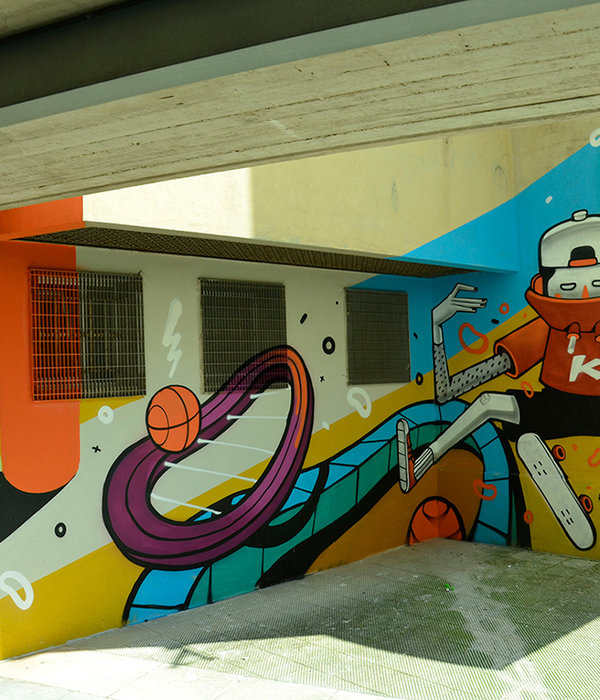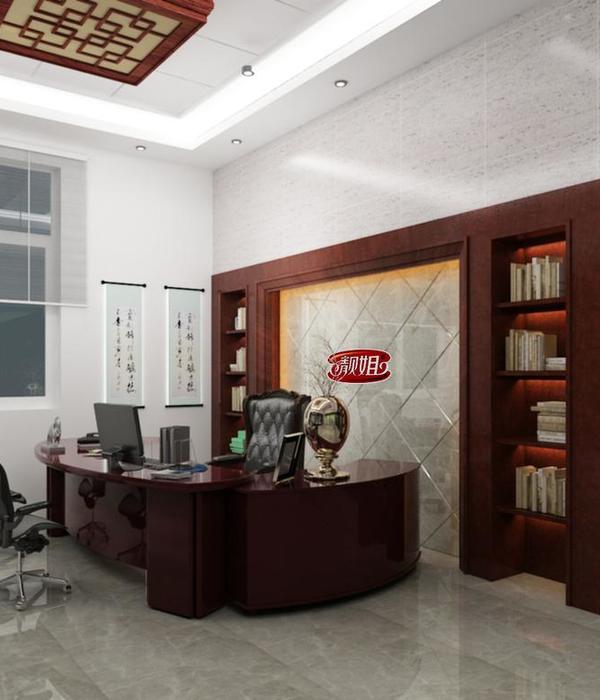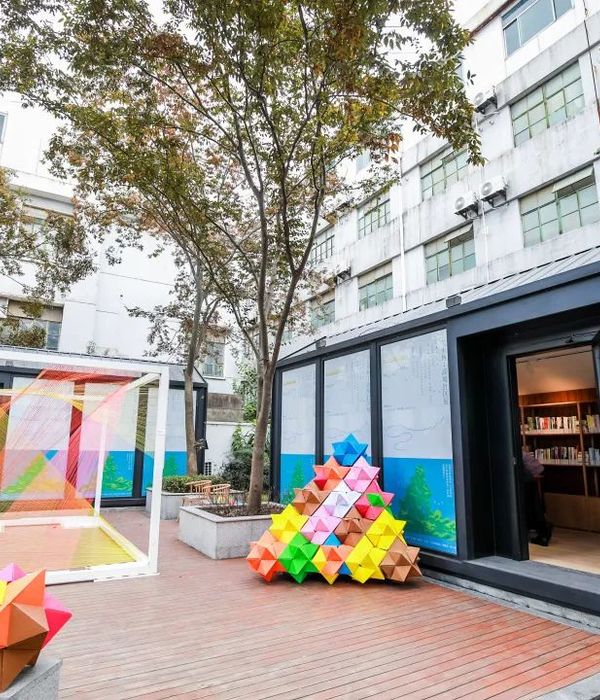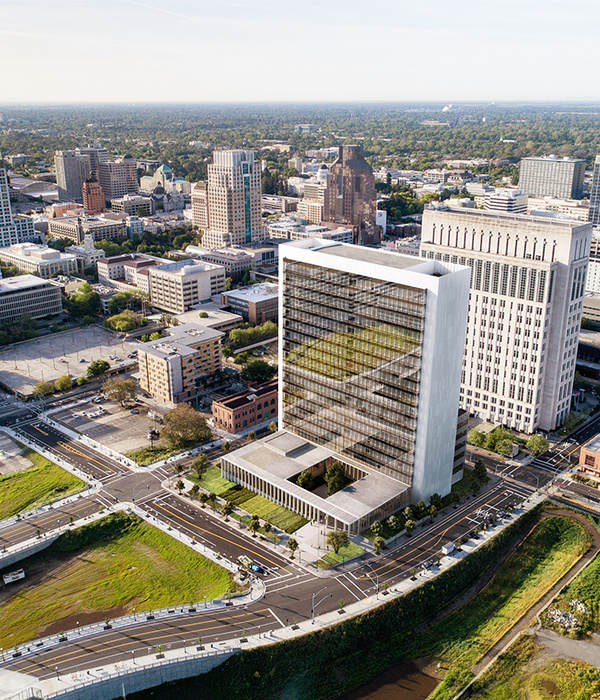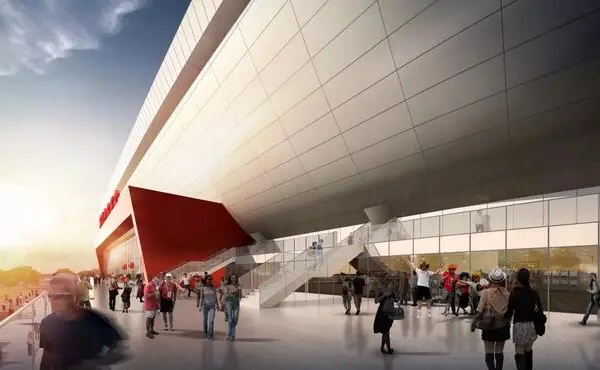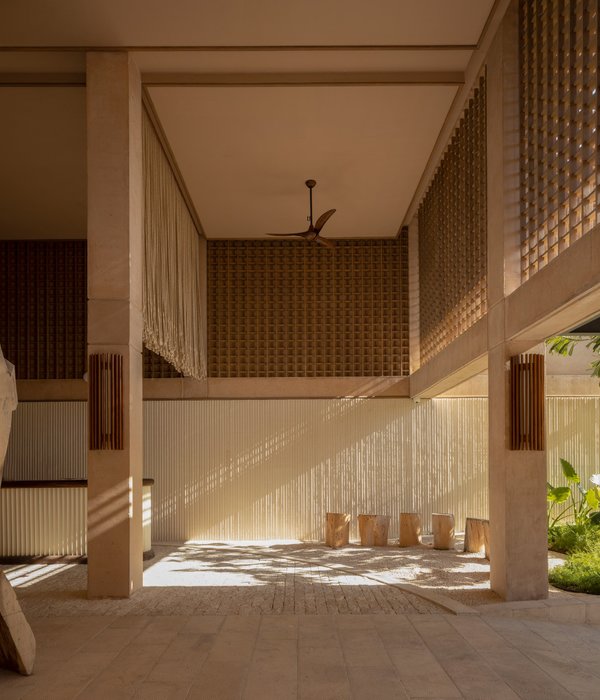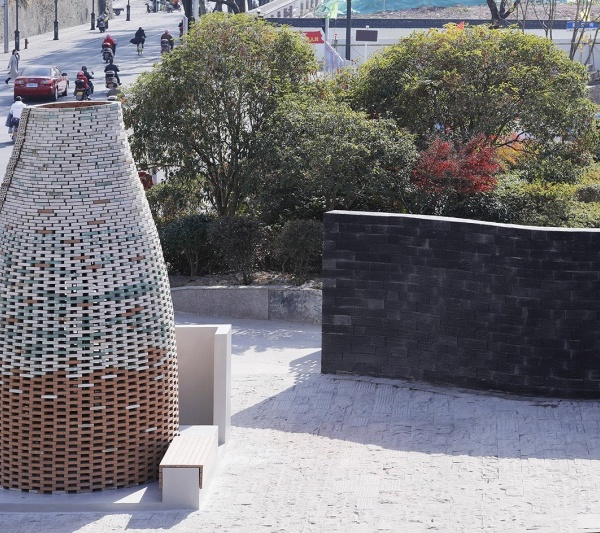MO现代艺术博物馆(MO Modern Art Museum)是由Studio Libeskind与维尔纽斯当地的Do architects和Baltic Engineers合作设计。占地3100平方米的博物馆还包括一个新的公共广场,与中世纪的历史城区仅有几步之遥,连接了维尔纽斯的过去与现在。
Designed by Studio Libeskind in collaboration with Do architects (Vilnius) and Baltic Engineers (Vilnius), with a new public piazza located steps away from the historic medieval city, the 3,100 sq-meters museum stands as an expression of Vilnius past and present.
▼博物馆与维尔纽斯城市环境,MO Modern Art Museum Vilnius’s urban context ©Norbert Tukaj
MO博物馆被设想为连接18世纪城市网格和中世纪内城的“文化大门”,其设计灵感也正来源于城市的历史大门。此外,建筑还参照了当地建筑在形式和材料方面的特征。
馆长Milda Ivanauskiene表示:“MO现代艺术博物馆同时是维尔纽斯与立陶宛的文化里程碑。这座新的世界级文化机构将展示本国艺术,同时探索其与全球艺术场景的连接。而与此同时,那些曾经被隐藏在铁幕之后、从未面向世人的作品也将通过博物馆呈现给全世界。”
The MO Museum is conceived as a cultural “gateway” connecting the 18th century grid to the medieval walled city. The concept is inspired by the historic gates of the city and references the local architecture both in form and materials.
“The MO Modern Art Museum is a cultural milestone for the city of Vilnius and Lithuania as a whole. This new world-class institution will showcase local art and will explore its links with the global art scene,” said Director of the Museum, Milda Ivanauskiene. “These never before seen works of art created behind the Iron Curtain will finally have a venue and international audience,” added Ivanauskiene.
▼建筑立面,building facade ©Norbert Tukaj
▼公共广场,public piazza ©Norbert Tukaj
博物馆的外立面覆盖以亮白色的石膏,呼应了本地建筑的用料。当来访者走近博物馆时,他们将首先看见一座戏剧性的开放式大楼梯。该楼梯与博物馆的对角轴线相交,与极简主义的外观形成了富有冲击力的对比。楼梯的形式将外立面“剖开”,连接了街道层与博物馆的上方楼层,同时贯通了建筑的内外空间。室外楼梯的顶端是一个阶梯式的开放露台,可作为公共聚集空间、表演或讲座场地。5米高的悬臂式玻璃墙为展厅带来了望向公共平台的开阔视野。
▼入口楼梯,entrance staircase ©Norbert Tukaj
▼悬挑空间,the overhang ©Norbert Tukaj
▼大楼梯将外立面“剖开”,连接了街道层与博物馆的上方楼层,the stair cuts the façade open connecting the street with the upper levels of the museum ©Hufton + Crow
The rectilinear exterior façade is clad in luminous, white plaster that references the local materials of the city. As visitors approach the museum, they encounter a dramatic open stair that intersects the museum on a diagonal axis creating an expressive counterpoint to the minimalist façade. The stair cuts the façade open connecting the street with the upper levels of the museum giving way to an openness that flows between inside and out. At the top of the exterior stair is a stepped open air terraced roof that serves as a gathering area and place for public performances and talks. A five meter cantilevered fully glazed wall allows views from the galleries to the public terrace.
▼5米高的悬臂式玻璃墙为展厅带来了望向公共平台的开阔视野 ©Hufton + Crow a five meter cantilevered fully glazed wall allows views from the galleries to the public terrace
▼建筑外观,exterior view ©Hufton + Crow
设计团队将公共空间的设计视为文化建筑中最重要的部分之一。因此,尽管位于高密度的城市中心,MO艺术博物馆仍有四分之一的场地被用于营造绿色空间。位于街道层的花园空间还将展示由立陶宛国家文化艺术奖获得者创作的雕塑作品。
An emphasis on including public space is one of the most important features that the Studio incorporates into its designs for cultural institutions. At the MO Museum, situated in a dense urban context, almost a quarter of the site is dedicated to green space. At street level, a garden space will exhibit sculptures created by the winners of the Lithuanian National Prize for Culture and Arts.
▼广场景观,the landscaped plaza ©Norbert Tukaj
博物馆创始人兼收藏家Viktoras Butkus表示:“Studio Libeskind的设计展示出强烈的象征性和民主性。本项目作为立陶宛最大的私人博物馆,它需要表达开放性,同时反映出博物馆及其藏品的独特气质,博物馆中大面积的公共空间正是这一理念的重要体现。”
▼大楼梯夜景,the grand staircase by night ©Hufton + Crow
“One of the reasons I am drawn to Studio Libeskind’s work is that it is both iconic and democratic,” said Museum Founder and Collector, Viktoras Butkus. “The MO Museum is the largest private museum in Lithuania, so it is important to me that museum expresses openness and reflects the ethos of the collection as well as the institution. The generous public spaces throughout the design play a vital role in communicating these ideas,” added Butkus.
▼大楼梯顶部平台,the stepped open air terraced roof ©Norbert Tukaj
在建筑北侧,来访者将从一个两层楼高(8米)的通高玻璃入口进入光线充盈的大厅。在该空间,内外融合的主题再次得到体现,几何形的天窗一方面将阳光引入底层空间,另一方面也使参观者能够看到上方的楼层。博物馆的地下藏品存放室也设置了一面玻璃窗,使参观者可以一窥幕后的展品。整个博物馆都充满了类似的“惊喜”时刻。
On the northern side of the building, visitors will enter though a two-story (8 meter tall) glazed entrance into a light filled lobby. Here, the theme of inside and out continues to play out with geometric interior skylights that cut through the building ushering in daylight to the lower floors and allowing views to the upper floors. An interior glazed opening offers visitors a peek behind the scenes and into the collection storage vault. These unexpected and sometimes playful moments continue throughout the museum.
▼大厅,lobby ©Hufton + Crow
▼地下藏品存放室,the collection storage vault ©Hufton + Crow
▼从大厅可以窥见藏品存放室内部 ©Hufton + Crow an interior glazed opening offers visitors a peek behind the scenes and into the collection storage vault
在入口附近,一座黑色的旋转楼梯连接了主展厅和底层大厅,构成了博物馆的核心。展厅呈开放式布局,为博物馆各种类型的展览提供了1300平方米的展示空间。此外,博物馆内还设有咖啡馆、书店、学习区、礼堂、储存室以及行政空间。
Near the entrance, a black spiral staircase connects the main gallery with the lower lobby and punctuates the museum’s core. The galleries are laid out as open floor plans that provide 1,300 sq. meters of exhibition space dedicated to both permanent and temporary exhibitions of the museum’s ongoing collection. The Museum additionally includes a café, bookstore, educational areas, auditorium, as well as storage and administrative space.
▼旋转楼梯连接了主展厅和底层大厅 ©Hufton + Crow a black spiral staircase connects the main gallery with the lower lobby
▼俯瞰,aerial view ©Hufton + Crow
▼博物馆夜景,night view of the museum ©Hufton + Crow
▼场地平面图,site plan ©Studio Libeskind
▼剖面图AA,section AA ©Studio Libeskind
©Studio Libeskind
{{item.text_origin}}

